Reef donkeys, amber tuna and AJs are all titles you may have heard for the greater amberjack (GAJ) but if you can’t remember this species’ name, you sure will remember the first time you caught one as these fish provide legendary fights that often result in winded fishermen, gear tangles and a heck of a story. To be sure we can continue to share some epic angling tales around a bowl of smoked AJ dip, researchers need your help reporting tagged greater amberjack in an effort to collect data which may lead to better estimates about population abundance and life history of this species. Plus! The reward for catching and reporting a tagged greater amberjack in this study pays out $250! With gas prices as high as they are, reporting one of these tagged fish can help the fuel bill and science at the same time. To learn more about the tagging component of this project and how to collect your reward check out this link.

Greater Amberjack Quick Facts
- Florida State Record: 142 pounds 2 ounces, W. A. Colbert, Jr., 02/03/1979, Islamorada
- IFGA World Record: 163 pounds 2 ounces, Tadashi Yamanaka, 6/22/2015, Japan
- GAJ have a worldwide distribution and can be found in tropical and temperate seas globally.
- GAJ can live up to 17 years with sexual maturity occurring between 3-4 years old which correlates roughly 30-50 inches in total length.
- There are 4 species of “amberjacks” that can be caught in the South Atlantic/Gulf; these are the greater amberjack, lesser amberjack, almaco jack and banded rudderfish.
The GAJ Tagging Project
This study seeks to estimate movements, habitat connectivity, and mortality rates of greater amberjack in the Gulf of Mexico and Atlantic Ocean off of the Southeastern United States. Researchers are using high reward external tagging and acoustic telemetry to obtain these estimates. This project is part of a larger multi-institution study funded by Mississippi-Alabama Sea Grant to estimate regional habitat-specific abundance of Greater Amberjack.

Throughout the summer of 2022, a total of 1200 tagged greater amberjack will be released throughout the Gulf of Mexico (West Texas to the Key West) and the Atlantic Ocean (Key West to North Carolina). Each fish will be tagged with one or two external reward tags. These tags are red and yellow in color and will be located just below the first dorsal fin on either side of the fish. Some fish will also have an acoustic transmitter implanted into the abdominal cavity of the fish. These transmitters will allow us to detect and track the fish to determine movements and habitat use.
The How Get Your Reward
The high reward tagging study relies on anglers to report the capture of tagged Greater Amberjack. Anglers will receive a reward of $250 per tagged fish that they catch and report. External tags may be located on either (or both) side(s) of the fish so be sure to check both sides of the fish if you catch one.
Clip the tag(s) off and call our Tag Return Hotline (1-833-515-5137), which is printed on the tag. It is very important that you clip off the tags because you cannot collect a reward without mailing us the physical tag.

Some of the fish have been tagged with two external reward tags. Rewards are paid on a per-fish basis, therefore reporting a double-tagged fish will result in a $250 reward just like a single-tagged fish. If you catch a double-tagged fish, we ask that you still clip off both tags. If you have captured a tagged fish, please read the detailed Greater Amberjack Tag Reporting Step-by-Step Instructions via this link.
The Why
You may think “pssshh I see a ton of AJ’s why I do should I report them?” Well if the $250 doesn’t sway you, think back to when was the last time you’ve hooked into a real hoss or seen three digits on the scale? Even as a 31-year-old angler I’ve witnessed a change from when I first started my westward migration offshore in my late teens. I still see a good number of smaller AJs but that amber whale I’ve had my eye on for years is getting harder to spot while diving, in fishing reports or in social media photos. Rod handoffs that were old hat when fishing for reef donkeys are becoming less common and putting the pole in good ole Rodney the rod holder to reel one in is almost unnecessary, unfortunately kids these days have it too easy.

A recent stock assessment of greater amberjack (GAJ) indicated that the species is above target populations in the South Atlantic but in the Gulf are currently overfished and undergoing overfishing. Don’t agree? Check out the stock assessment here and start reporting tags if you come across them so we can get a better understanding of the fishery, more data leads to better informed decisions by our resource managers. To read more about the congressional funded GAJ project and the steps taken to select this tagging project check out these links 1 and 2.
What does overfishing and overfished mean? Learn more about stock assessments via this EDIS document.
Overfishing: A stock that is subject to overfishing has a fishing mortality (harvest) rate that is higher than the rate that produces maximum sustainable yield (MSY). MSY is the largest long-term average catch or yield that can be taken from a stock or stock complex under prevailing ecological, environmental conditions and fishery technological characteristics (Fishwatch.gov). Translation: Too many fish are being removed from the population by the act of fishing which cannot sustain the population over time. This removal could be from harvest and/or mortality upon release. More people are fishing now than ever before and even if a fish is released, there is a portion that will most likely die due to damage sustained while caught or from not being handled properly. A fish that is removed from the population could be put in the box for dinner, die from improper handling, barotrauma or gets chomped on by a predator, all of which removes that individual from the breeding population. You may have seen recent GAJ changes in regulations such as these to address the issue by reducing harvest, pressure and therefore mortality.
Overfished: A stock that is overfished has a biomass level depleted to a degree that the stock’s capacity to produce MSY is jeopardized. A population can be overfished but be managed under a rebuilding plan that over time returns the population to a level that can support the MSY (Fishwatch.gov). Translation: Too many fish have been removed from the population to realistically sustain the fishery without some sort of management change.
Amberjack(s)?

One tricky aspect to managing this and many species out there is misidentification. Often regulators make the minimum size limits the same for species that can be commonly mixed up like gag and black grouper but often there are also differences in harvest seasons. The same issue can be said about the 4 species of fish that can be referred to as amberjacks. These fish with different regulations can look very similar to both new and seasoned anglers and best practice to brush up on species identification before your next trip.
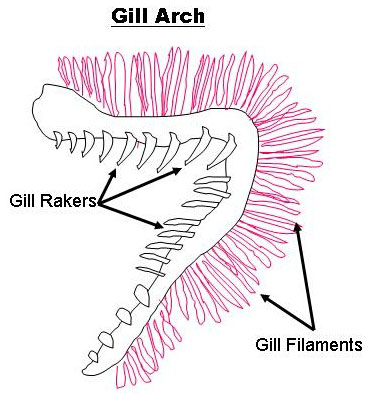
Check out the blurb and graphic below to brush up on ways you differentiate the greater amberjack, lesser amberjack, almaco jack and banded rudderfish. The toughest two species to tell apart are the greater and lesser amberjack. Personally, if greaters are closed, I don’t bother trying to determine if what I caught is a lesser aj as it is difficult to tell the two apart without counting the gill rakers and doing so on a live fish has a high likelihood of injuring the individual. A fishery infraction can make a great day of fishing feel like a bad one and hits even worse when you think you’re in the right; that’s why when in doubt, let it swim!
For a more in depth dive on the species check out my other blog about amberjack.
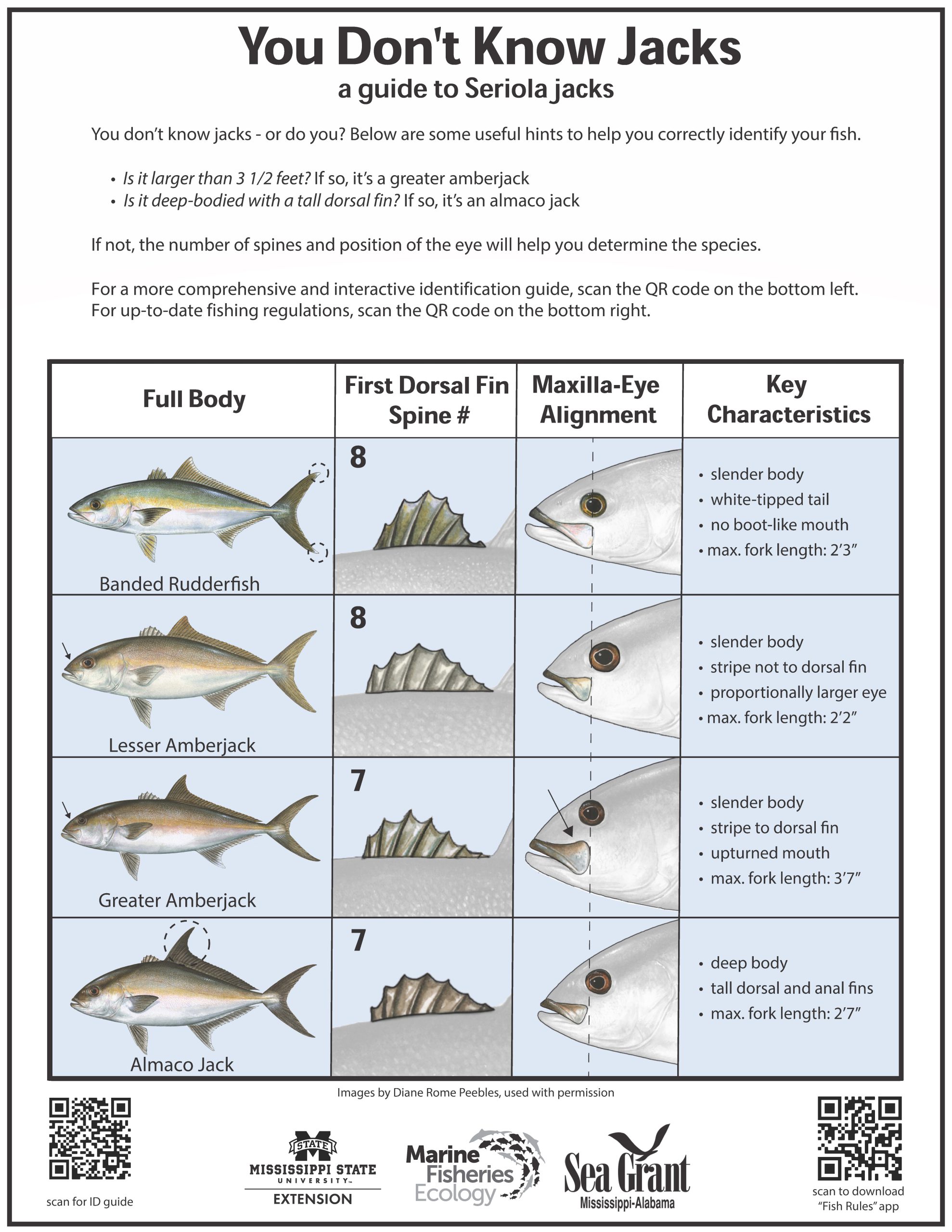
Greater Amberjack (Seriola dumerili):
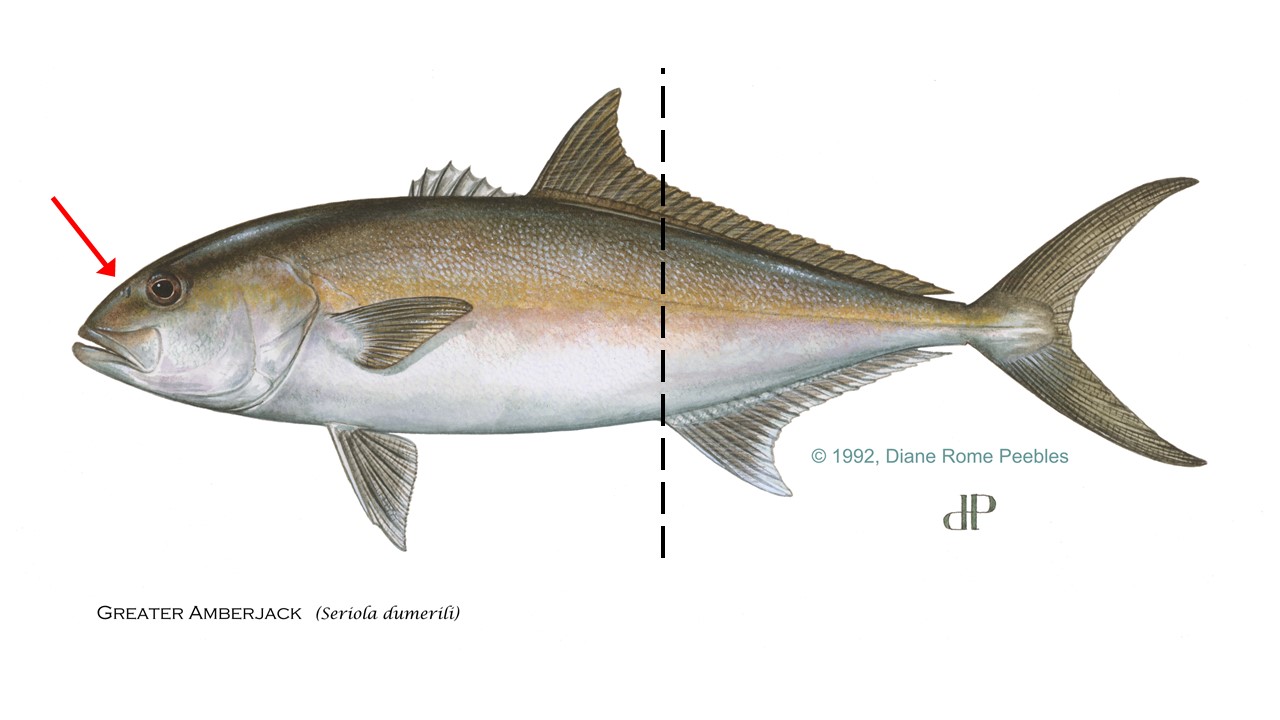
Distinguishing Characteristics: Large slender body shape, 7 dorsal spines, nuchal bar coloration extending into first dorsal area, 11-19 gill rakers.
Lesser Amberjack (Seriola fasciata):

Distinguishing Characteristics: Slender body shape, 8 dorsal spines, nuchal bar coloration stopping before first dorsal fin, 23-26 gill rakers, proportionately larger eye.
Banded Rudderfish (Seriola zonata):
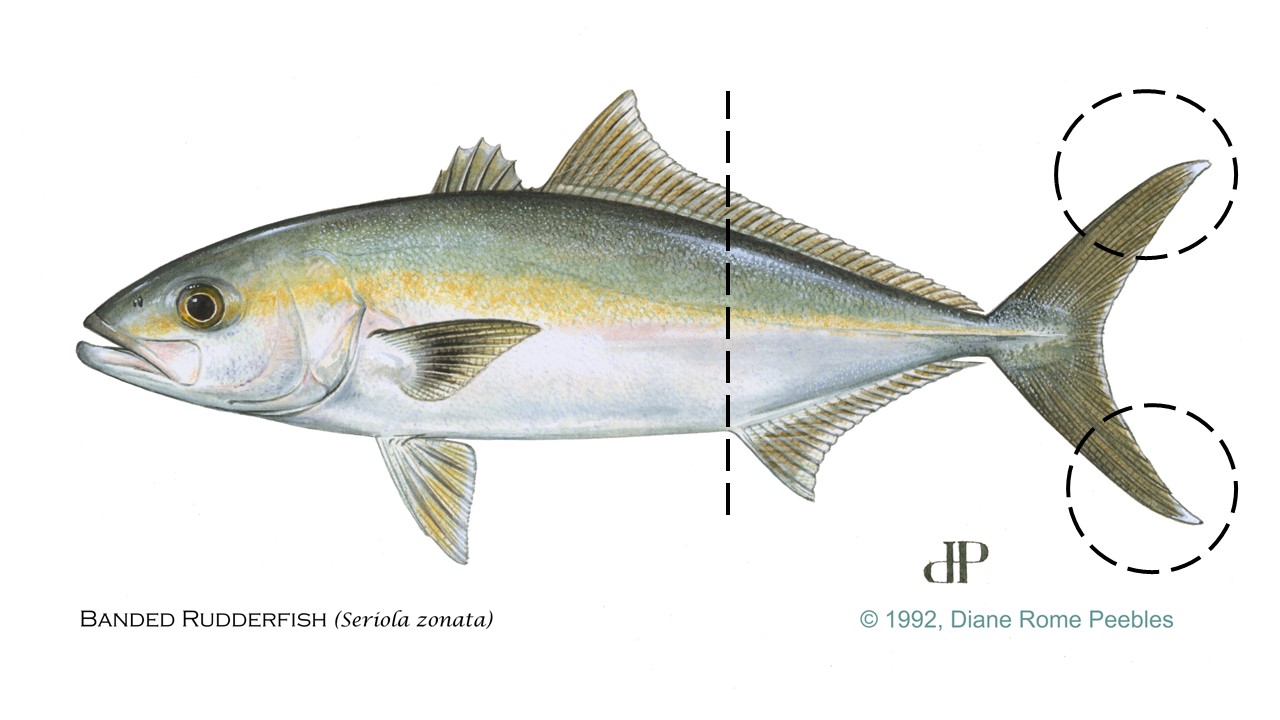
Distinguishing Characteristics: Slender body shape, 8 dorsal spines, anal fin only half the length of the second dorsal fin, white tips on tail fin, rigid keel, flat long maxilla with no boot shape supra maxilla, 12-17 gill rakers, proportionally smaller eye.
Almaco jack (Seriola rivoliana):
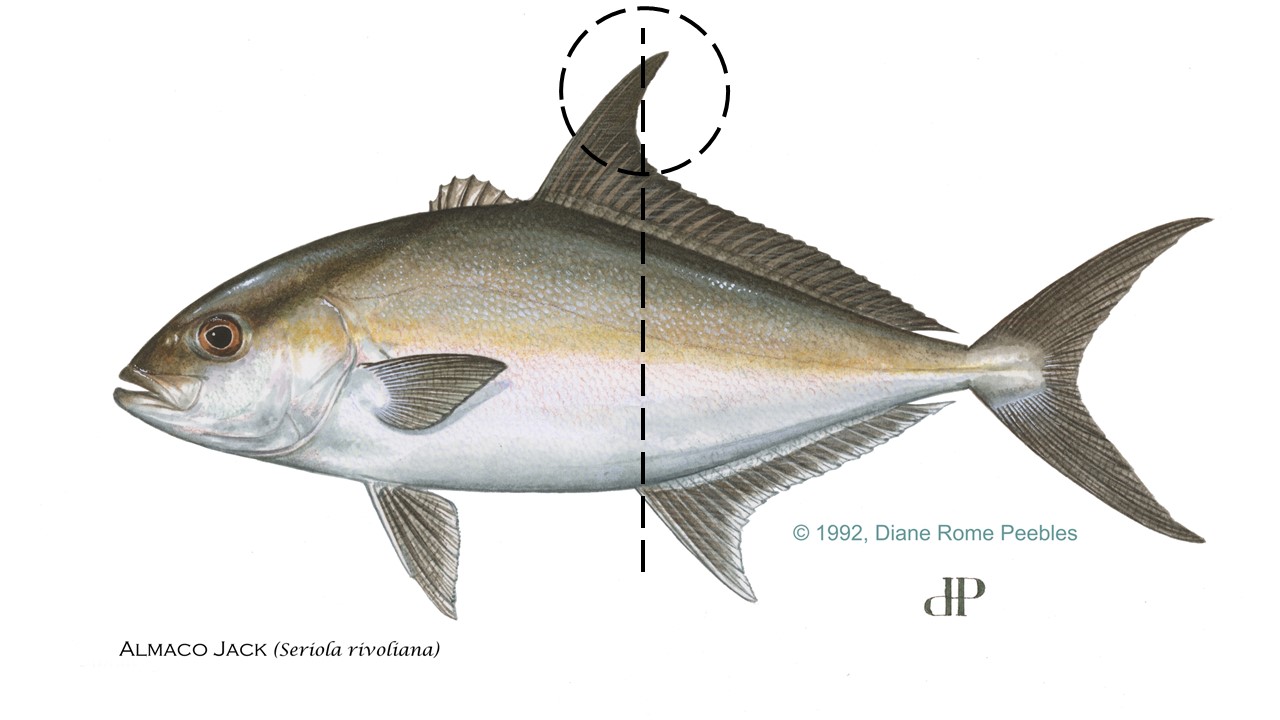
Distinguishing Characteristics: Deep body shape, pronounced elongated dorsal and anal fin, darker coloration, 18-25 gill rakers.
More Programs !
Want to learn more about fisheries management and how regulations are made? What about best practices when catch and release fishing or environmental ethics? Check out the FREE Florida Friendly Angler Course. Educated anglers = better environmental stewards = a better shot at sustaining a fishery = good times.

Amberjack and other reef fish are susceptible to barotrauma when caught at deeper depths. To find out more about this injury that results in floating fish and potential internal organ damage, check out the Return Em’ Right program. This program teaches anglers what you can do to mitigate the negative effects of barotrauma and allows us to catch that fish again. Anglers in the Gulf of Mexico can qualify for a free gear package valued at over $100 that can help us return reef fish right.
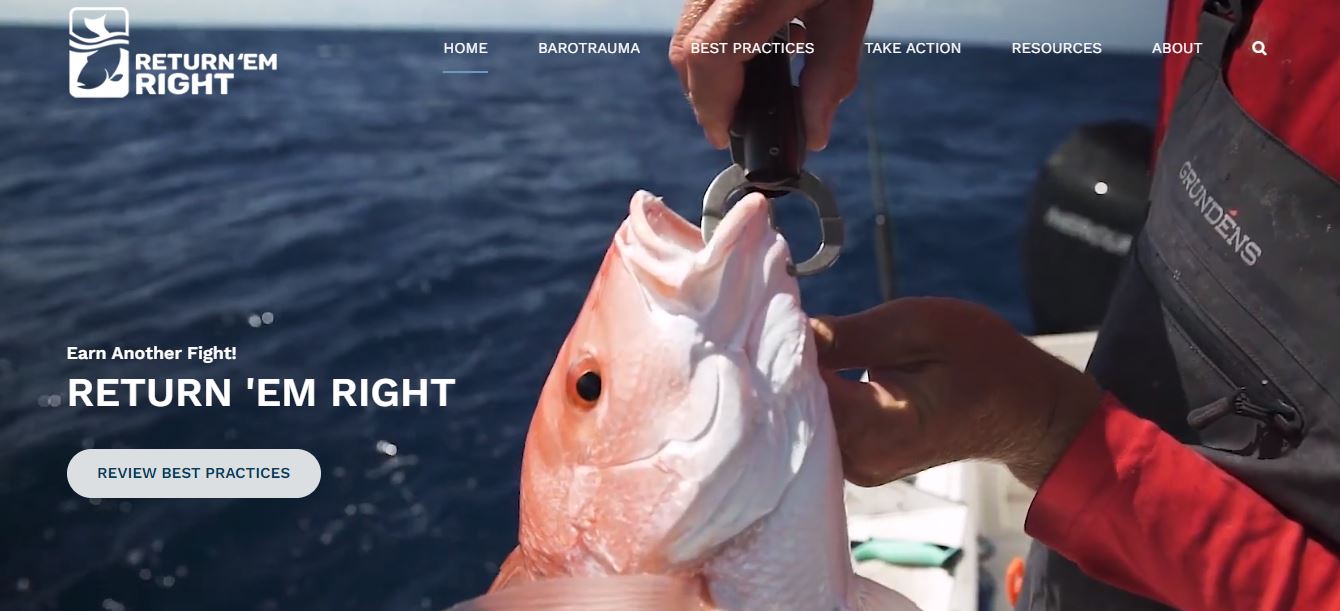
https://www.msstate.edu/newsroom/article/2022/06/jackpot-scientific-study-offers-250-rewards-tagged-greater-amberjack
 0
0
